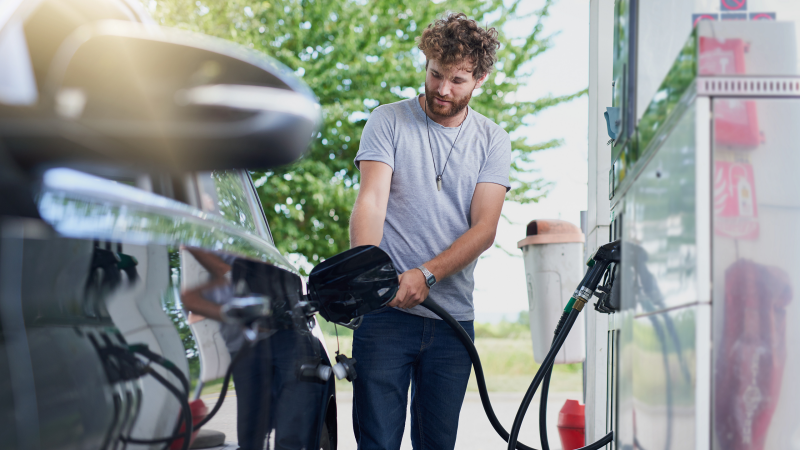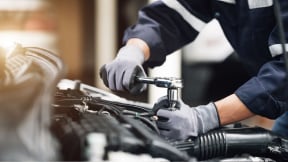Understanding fuel efficiency

The cost of fuel is an ongoing concern for drivers. That’s why consumers often look to find cars that will help them get the most out of every gallon. A car with better fuel efficiency may generally cost less to fill up over time, so understanding how fuel efficiency works can potentially pay off in a literal sense.
What is fuel efficiency?
From a technical standpoint, “fuel efficiency” is a measurement of what percentage of the fuel is used to power the actual movement of the car. In everyday usage, however, “fuel efficiency” is more often used in place of “fuel consumption,” denoting how much gas is used to travel a certain distance (typically expressed as gallons per 100 miles).
Fuel efficiency vs. fuel economy
In addition to fuel efficiency, you may also have encountered the term “fuel economy.” Though closely related, they’re two distinct things. As you learned, fuel efficiency measures how much fuel it takes to travel a set distance. Fuel economy, on the other hand, measures the distance a car can travel on a single gallon of fuel (typically expressed as miles per gallon).
When looking at fuel efficiency, a smaller number is preferable as it indicates less fuel used per 100 miles traveled. When looking at fuel economy, however, the inverse is true — a higher number is preferred as it indicates more miles traveled per gallon.
How to maximize fuel efficiency
Although a car’s window sticker has numbers for both fuel efficiency and fuel economy, these are results from a testing environment. Real world applications may differ slightly, and there are some things you can do to potentially improve your fuel efficiency:
Performing regular maintenance
Sticking to a good car maintenance schedule and ensuring your air, fuel and oil filters are clean can help increase your car’s performance. Properly inflated tires are also beneficial as they create less resistance.
Considering your driving habits
The way you drive can affect your fuel usage. In fact, this is the reason that many cars come with separate fuel economy measurements for highway and city driving. Stop-and-go city traffic tends to lower fuel efficiency, whereas cruising at a steady speed down the highway can improve it.
Reducing engine idle time
Cars can burn through a surprisingly large amount of gas while idling, which is another reason congested city traffic can be so damaging to fuel efficiency.
Another common culprit for idle engine time is people “warming up” their engines in the winter. Modern engines typically don’t require this warm-up period, and warming up the engine is only a concern in extremely cold temperatures. In those cases, an engine block heater may allow you to accomplish this without wasting fuel by idling the engine.
Lowering weight or removing drag
Carrying excess weight is a surefire way to bring fuel efficiency down, as your car must now work harder to keep all that weight in motion. If possible, try eliminating any excess weight you may have stored in your car. When trying to maximize fuel efficiency on long trips, consider packing lighter when you can. Storage equipment, such as a roof rack, may also increase drag resistance by altering the aerodynamic profile of your car.
In summary
Fuel efficiency and fuel economy are both key metrics to pay attention to when car shopping. Fuel is a continuous cost of car ownership. Finding a car with better fuel efficiency, therefore, could be a helpful strategy to lower that cost over time. There are also things you can do to improve fuel efficiency as a driver. These include reducing time spent idling, evaluating your driving habits and being consistent with your car's maintenance schedule.



